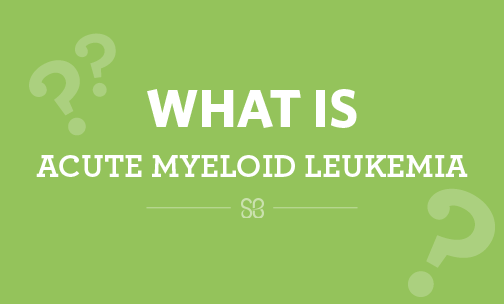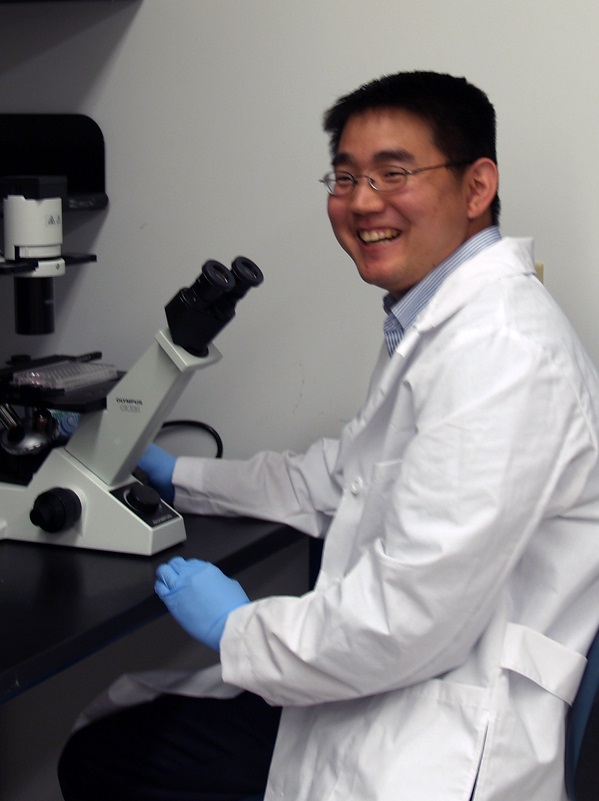
Dr. Mizukawa is a past St. Baldrick’s Scholar. He explains acute myeloid leukemia symptoms, treatment, and research progress
What is acute myeloid leukemia (AML)?
Leukemia is cancer of the blood cells. Leukemia cells divide quickly and fail to mature into normal, functioning blood cells.
Acute leukemia progresses rapidly and is classified into two general subtypes:
- When the cancer affects the lymphocytes, a type of white blood cell, it is called acute lymphoblastic leukemia, or ALL.
- When the cancer affects other blood cell types, such as red blood cells, platelet-forming cells, and other types of white blood cells, it is called acute myeloid leukemia, or AML.
ALL is the most common cancer in children and accounts for roughly 80% of all acute leukemia in children. AML is more rare, representing only 20% of acute leukemia in children.
What are the signs and symptoms of AML?
In both AML and ALL, the cancerous cells, or blasts, grow very quickly and fill up the bone marrow where normal blood cells are formed. The blasts fail to mature into functioning cells and crowd out the remaining normal blood cells.
AML blasts. Photo by Paulo Henrique Orlandi Mourao via Wikimedia Commons.
- Fatigue
- Paleness
- Bruising
- Bleeding
- Infections
- Fever
Leukemia blasts can fill up the bones, liver, spleen, and lymph nodes, leading to bone pain, masses in the abdomen, and enlarged lymph nodes. This is more common in ALL than AML.
In some cases, AML can appear with bumps or swelling in the skin and/or gums, around the eyes, or in the nervous system.
How is AML diagnosed?
AML is diagnosed by testing samples of blood and bone marrow. The cells are examined under a microscope to look for blasts.
Specific markers on the blood or bone marrow cells are analyzed with a technique called flow cytometry. This helps researchers learn more about what kind of leukemia it is. This test is often repeated during treatment to make sure the treatment is working.
Additionally, chromosome and DNA studies can help identify “high-risk” patients who would benefit from more intense therapy.
What treatment options are available for AML?

Dr. Mizukawa in the lab. He is working to develop new drugs to treat kids with AML.
Managing side effects and complications is an important part of leukemia therapy, so treatment is usually done in a hospital.
How is AML research helping kids with cancer?
AML research continues to look for more effective treatments with less harmful side effects. Newer therapies are being developed to change how genes are turned on or off in leukemia, or to target specific genetic mutations that play a role in leukemia. Researchers are also studying how to combine these drugs to maximize their effectiveness.
Studies in immunotherapy investigate using immune cells and/or antibodies to recognize and fight the leukemia. Other treatments try to prevent the leukemia from evading the immune system so that immune cells can clear the leukemia away.
AML research also focuses on how to target the AML stem cell that causes the leukemia. While most AML blasts can be killed by chemotherapy, if the AML stem cells remain, the leukemia will return. By understanding how the AML stem cells survive, we may be able to develop new therapies to make the AML stem cell more sensitive to therapy and cure more children with AML.
Visit the grants search page to see current grants to advance AML research, funded by St. Baldrick’s.
Donate now and help support research into better treatments for kids with cancer.
Read stories of kids with AML:

 SBF
Tweets »
SBF
Tweets »